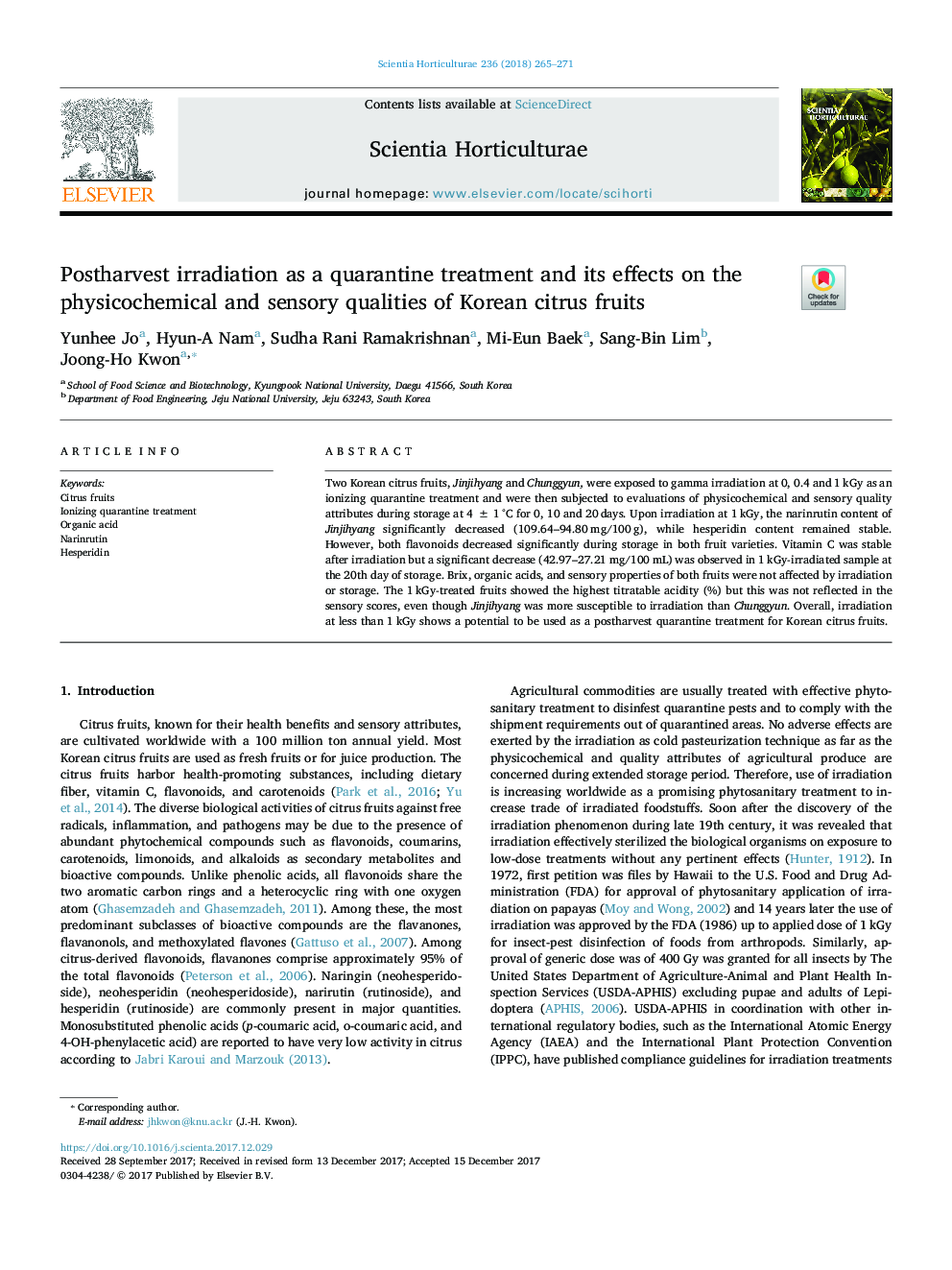| Article ID | Journal | Published Year | Pages | File Type |
|---|---|---|---|---|
| 8892650 | Scientia Horticulturae | 2018 | 7 Pages |
Abstract
Two Korean citrus fruits, Jinjihyang and Chunggyun, were exposed to gamma irradiation at 0, 0.4 and 1â¯kGy as an ionizing quarantine treatment and were then subjected to evaluations of physicochemical and sensory quality attributes during storage at 4â¯Â±â¯1â¯Â°C for 0, 10 and 20â¯days. Upon irradiation at 1â¯kGy, the narinrutin content of Jinjihyang significantly decreased (109.64-94.80â¯mg/100â¯g), while hesperidin content remained stable. However, both flavonoids decreased significantly during storage in both fruit varieties. Vitamin C was stable after irradiation but a significant decrease (42.97-27.21â¯mg/100â¯mL) was observed in 1â¯kGy-irradiated sample at the 20th day of storage. Brix, organic acids, and sensory properties of both fruits were not affected by irradiation or storage. The 1â¯kGy-treated fruits showed the highest titratable acidity (%) but this was not reflected in the sensory scores, even though Jinjihyang was more susceptible to irradiation than Chunggyun. Overall, irradiation at less than 1â¯kGy shows a potential to be used as a postharvest quarantine treatment for Korean citrus fruits.
Keywords
Related Topics
Life Sciences
Agricultural and Biological Sciences
Horticulture
Authors
Yunhee Jo, Hyun-A Nam, Sudha Rani Ramakrishnan, Mi-Eun Baek, Sang-Bin Lim, Joong-Ho Kwon,
